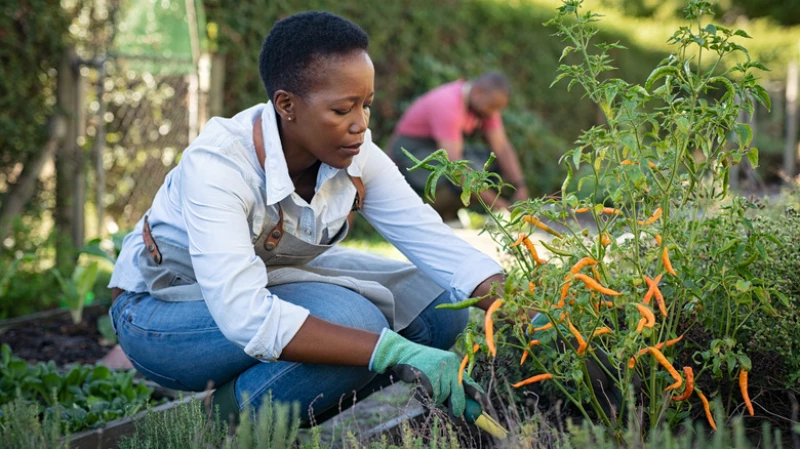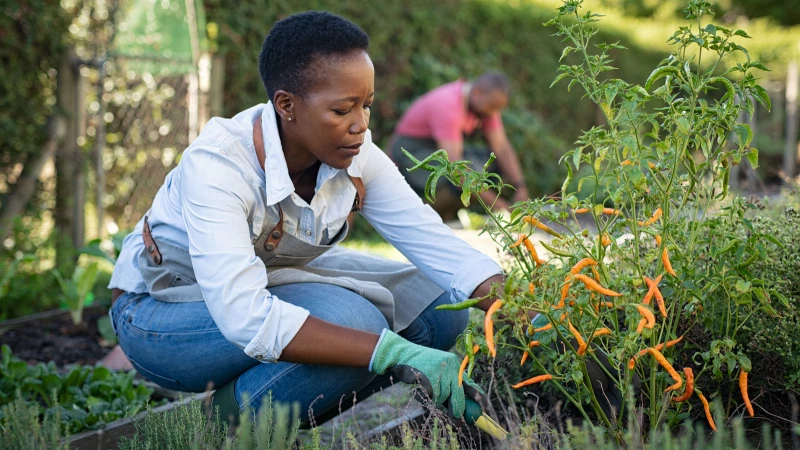Starting seeds for your garden can be a bit of a puzzle, especially for those new to gardening who may not be familiar with the specific requirements of different plants. Factors like temperature, moisture, and light are crucial in successfully kickstarting the growth of your garden seeds. Some seeds may even need special conditions like cold stratification or exposure to fire to break dormancy and begin sprouting. It's important to pay attention to details such as planting depth, soil composition, and pH levels, as these can all impact germination. Following the instructions on the seed packet is key to giving your plants the best possible start. Keep in mind that issues like pathogens, pests, and competing plants can also affect the growth of seedlings. If you're planning to grow peppers this season, try giving them a head start by placing them in the freezer first.
Pepper seeds can benefit from a stint in the freezer before planting, as suggested by a popular TikTok video. This method, known as cold stratification, imitates the natural winter conditions that seeds undergo, breaking dormancy and kickstarting germination. By subjecting the seeds to cold temperatures, the hard outer coatings are weakened, and essential enzymes are activated, priming the seeds for growth. Freezing can also help synchronize germination, leading to a more uniform and speedy sprouting process when the seeds are eventually planted. Overall, cold stratification can significantly enhance germination rates and promote the healthy development of pepper seedlings.
How to freeze and thaw your pepper seeds
To optimize the germination process of pepper seeds through freezing, start by selecting fully ripe and healthy pepper fruits for seed extraction or utilize purchased pepper seeds. Opt for fully ripe peppers, as they are more likely to yield mature and viable seeds. Next, kick off the cold stratification process by placing the labeled envelope or container in the freezer. It is crucial to store the seeds in airtight packaging to prevent moisture absorption during freezing, which could harm the seeds due to water expansion. Allow the seeds to remain in the freezer for a minimum of 24 hours, although some gardeners extend this period up to two months, depending on the pepper variety and desired germination outcomes. Following the cold treatment phase, meticulously take the seeds out of the freezer. The TikTok video advises thawing them in warm water for 30 minutes before proceeding with planting.
Cautions for trying this method

While using the freezer to jump-start cold stratification might seem like a convenient shortcut, it's not universally suitable for all types of seeds. It can actually damage certain types of plants. Cold stratification mimics the natural conditions seeds undergo during winter, where they experience a period of cold temperatures to break dormancy and stimulate seed germination in your garden. However, freezing temperatures in a standard freezer can be too harsh for many seeds, causing cell damage or even death. Some seeds are adapted to withstand freezing temperatures, but others are not. Seeds with delicate embryos or thin seed coats may be susceptible to damage in the freezer. Additionally, seeds of certain species have specific requirements for cold stratification. Some may require fluctuating temperatures rather than a consistent cold environment.
Cold Stratification: A Gentle Approach for Seed Germination
Instead of relying on the unpredictable outdoor conditions, consider using your refrigerator for cold stratification to enhance seed germination. The refrigerator can offer a stable and mild environment, with temperatures typically ranging between 35 to 40 degrees Fahrenheit. This temperature range is ideal for providing the required chilling period without risking any freezing damage to the seeds.
Plants such as native wildflowers, specific tree species, and perennial herbs can greatly benefit from cold stratification. It is crucial to understand the individual needs of each type of seed before starting the stratification process. Improper treatment can lead to reduced germination rates or even complete failure of seed sprouting. Always refer to the guidelines provided, often found on the seed packet, to ensure the best chances of success.







